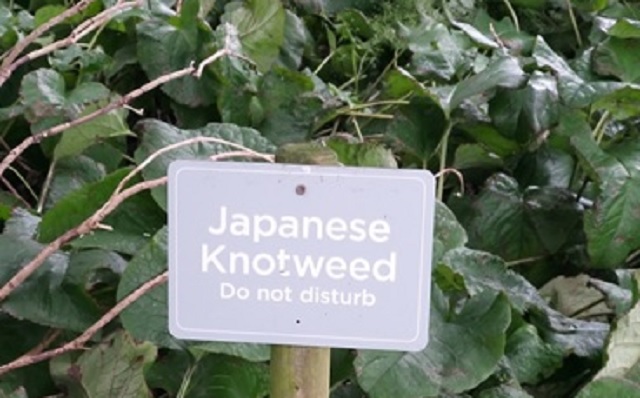
 Japanese knotweed is an invasive plant that spreads rapidly and can tear through buildings, paving and roads. It is notoriously difficult to clear and if you allow Japanese knotweed to spread and grow on to another person’s property you could be prosecuted. Japanese knotweed can grow 20cm a day and can cause damage to your house’s foundations, drainage systems and walls as it grows rapidly seeking out moisture.
Japanese knotweed is an invasive plant that spreads rapidly and can tear through buildings, paving and roads. It is notoriously difficult to clear and if you allow Japanese knotweed to spread and grow on to another person’s property you could be prosecuted. Japanese knotweed can grow 20cm a day and can cause damage to your house’s foundations, drainage systems and walls as it grows rapidly seeking out moisture.
Since the introduction of the Wildlife and Countryside Act 1981, it is an offence to allow Japanese knotweed to grow in the wild.
Further regulations were passed in 2013 in relation to buying and selling a property. Since 2013 the seller of a property is required to state whether Japanese knotweed is present on their property through a TA6 form – the property information form used for conveyancing.
If you are selling your house it is worth checking in advance to see if your property has Japanese knotweed. Disputes over the identity of a plant or the failure to disclose its presence to the seller could increase costs later in the buying process.
How to spot Japanese knotweed
If you are unsure if you have Japanese knotweed on your property Defra advises that you look for:
- fleshy red tinged shoots when it first breaks through the ground;
- large, heart or spade-shaped green leaves;
- leaves arranged in a zig-zag pattern along the stem;
- a hollow stem, like bamboo;
- dense clumps that can be several metres deep;
- clusters of cream flowers towards the end of July that attract bees;
- it dies back in the autumn, leaving brown stems.
How to remove Japanese knotweed
To remove it you have several options:
- Dig it out: Digging out Japanese knotweed is a possibility but if you leave any trace of its deep root system it will grow back – it takes just 0.8g of root for a new plant to grow again.
- Feed it to bugs: Experts have introduced a Japanese bug, aphalara itadori, to the UK that feasts almost exclusively on knotweed.
- Kill it with chemicals: You can turn to chemicals, especially treatments containing glyphosate, but be warned, it can take up to five years’ treatment to finally be rid of the plant.
Any treatment could cost thousands of pounds and we would recommend you seek advice before proceeding. You can get further advice on removing Japanese knotweed on the RICS website.
